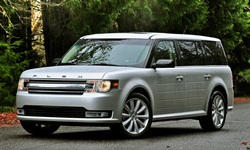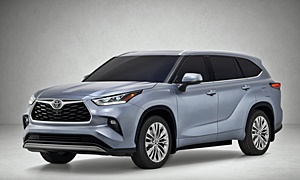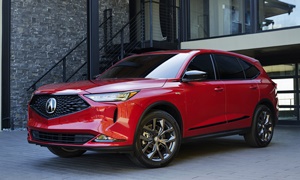The Hyundai Santa Fe is also a very good vehicle. The Santa Fe and Sorento are built on the same platform (and both models are built in Kia's U.S. factory in West Point, Georgia). In theory, the Santa Fe is the more comfortable, luxurious model while the Sorento is sportier and has higher feature content for less money.
I previously recommended a 2013 or newer Sorento, but I need to correct that. The Sorento was heavily revised for 2014 with better ride and handling, improved steering, additional feature content, modified exterior details and a new, improved V6 engine. I would definitely recommend that 2014 over the 2013.
I thought about the Santa Fe when I recommended the Sorento earlier and I probably should have mentioned it. The Santa Fe (in 3-row form, which I wish they would call the XL, as they do in Canada) was introduced in 2013. The frustrating thing (to me) is how they package options and trim levels of each model.
In 2014, the Santa Fe came in two trim levels- GLS or Limited. The GLS is somewhat basic in standard form, ,but there are two option packages available- a 3,550 Premium Package (Leather seats, Power Liftgate, Power passenger seat, Proximity Key w/ Push-Button Start and a Blind Spot Detection System) and the $4,000 Technology Package (requires the 'Premium' Package). So there are some used GLS models that will have cloth seats and limited feature content. Some will have the Premium Package and some with have both the Premium and Technology Package. The Limited will be priced out of your budget, but it might not be a great fit anyway. The Santa Fe GLS is a 7-seater while the Limited is only a 6-seater (two captain's chairs in the middle row instead of a bench seat).
Kia offers the Sorento in more trim levels- LX, LX V6, EX, SX and SX-L (or SX Limited). The mid-level EX essentially has the same feature content as the Santa Fe GLS with Premium Package. A 3rd row seat was optional on the EX, so you'll need to make sure any you're considering have the 3rd Row Seat Package (3rd row bench seat, separate rear ventilaltion controls, priced at $1,200 when new). The Sorento EX also had a $4,400 Touring Package available that is very similar to the Santa Fe's Technology Package. It adds Navigation, 10-spkr Infiinity audio, Blind Spot Detection System, Driver seat/mirror memory, Power Liftgate and Ventilated (cooled) front seats.
Searching nationwide on Cars.com, I found a lot more Sorento EXs than Santa Fe GLS models. A 2014 Santa Fe EX for just under $20k (with the 3rd row only, no Touring Pkg) for $19-$21k is realistic. I even found some 2014 SX and Limited models for just under $25k and they were also CPO (Certified Pre-Owned) which includes an extensive warranty (and the Limited in particular has a lot of extra features).
So either way, you can't really go wrong as long as you make sure you get the features you need/want. I would definitely recommend locating two at nearby dealerships (or, if you're really lucky, at the same dealer) so you can drive the Santa Fe and Sorento back-to-back. The Cars.com 'Search Inventory' feature is very useful!






